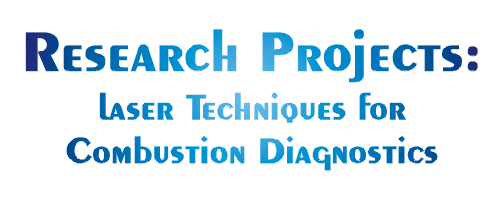


Degenerate four wave mixing, DFWM, is developed for trace species detection in hostile environments such as flames and plasmas. Techniques are developed for trace species detection and measurement of temperature, concentration, pressure and gas velocity.
Multiplex and broadband FWM spectroscopy is used for time-resolved simultaneous species and temperature determination. Allied to imaging methods the technique has been extended to record instantaneous concentration and temperature along a 1-D line in a flame.
The effects of coupled transitions in broadband four wave mixing are studied experimentally to better understand accuracy and precision of temperature measurement using multiplex FWM. The study also has relevance to two-colour four wave mixing.
Laser Induced Thermal Grating Spectroscopy LITGS has been developed for measurement of temperature and pressure in high temperature combustion. Preliminary work has detected OH in flames up to 40 bar pressure. The technique is being developed using long-pulse dye laser probes to improve still further the sensitivity. A major aim of the project is to make minor species measurements in spark-ignition engines throughout the firing cycle.
LITGS has also been used as the basis of a new method to measure the velocity of high speed gas flows which we call Thermal Grating Velocimetry, TGV. The technique does not require seeding of the flow with particles and so is particularly suitable for very high speed flows.
Infra-red DFWM is being developed for detection of trace species in combustion and plasma systems. Hydrocarbon molecules of critical importance e.g. the methyl radical are being targeted since many of these species cannot be detected using conventional laser induced fluorescence methods.